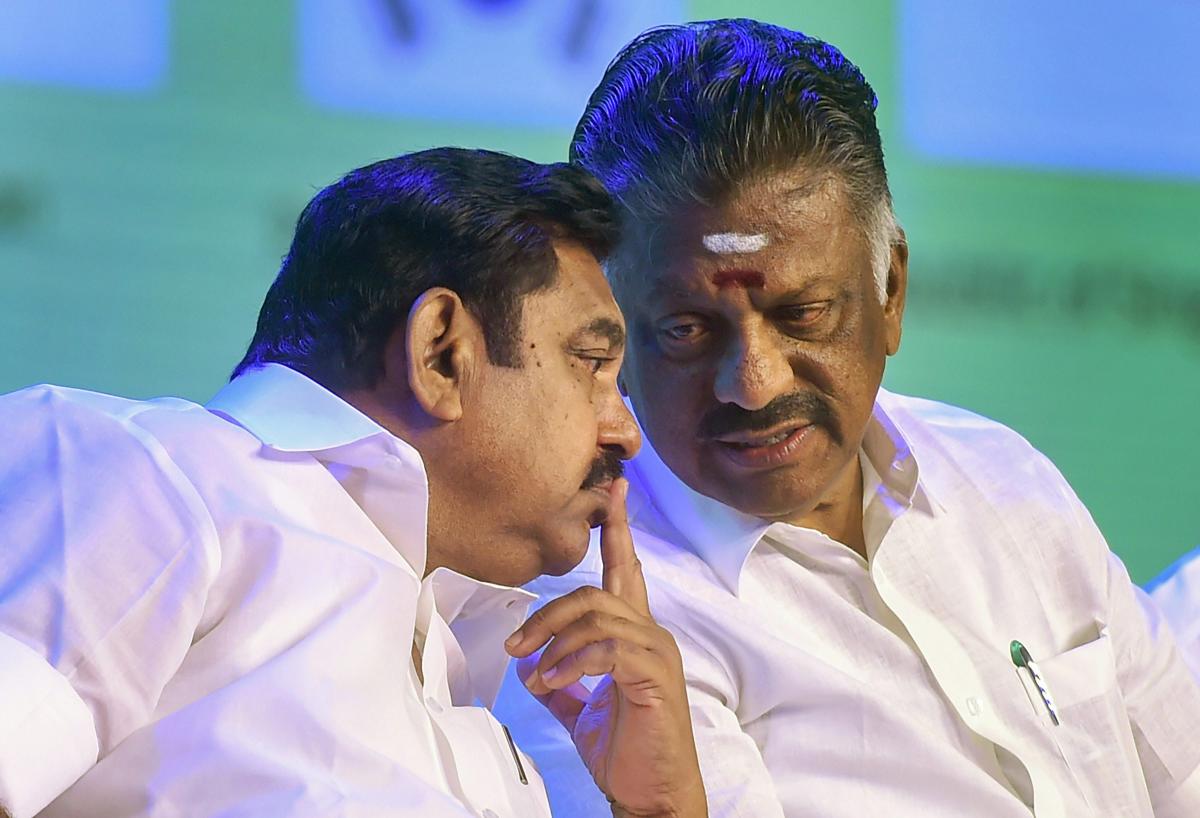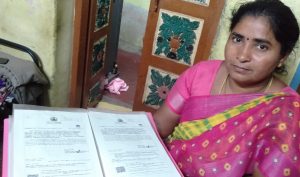
Will powerful Kallars in southern TN decide fate of AIADMK?

On Maha Shivratri, village temples in Tamil Nadu’s southern districts of Pudukkottai to Ramanathapuram bustle with activity. In Usilampatti in Madurai, popular item numbers from Tamil films, and not pious songs, blare from loudspeakers.
The mandapams adjoining the temples are usually decorated with paintings of Netaji Subhash Chandra Bose and Pasumpon Muthuramalingam Thevar, a leader who has a demigod status for the community native to this area, the Mukkulathors or Thevars.
In Usilampatti however, the paintings feature one more significant face beside Muthuramalingam—PK Mookiah Thevar, an iconic figure for another community in the region, the Piramalai Kallars.
Unlike other districts, villages in Usilampatti are celebrating ‘Maasi Pachai’ (Maasi is the Tamil month which falls in February and March), a festival to worship forefathers as a sign of gratitude. This Hindu ritual to remember the dead is widely known as ‘Thithi’ in these areas.
However, black flags prominently hoisted in different places around the villages seem out of place on this special day. “The black colour may look inauspicious to outsiders, but we don’t consider it like that since our god Karuppasamy is black too,” said Selva Preetha, a housewife in Perungamanallur village, which falls under the Usilampatti constituency.
But the black flags express dissatisfaction of the people over the government’s recent decision to provide 10.5% reservation to the Vanniyars, admitted Preetha, who also warned that this black flag could become a “black mark for AIADMK in this election”.
Also read: Polls at the door, AIADMK grapples with internal rebellion, desertions of allies
Traditionally, the southern belt has been an AIADMK stronghold since MGR’s rule. The most dominant community here, the Mukkulathors or Thevars, always voted for them. The AIADMK cabinet, till the demise of Jayalalithaa in 2016, used to be dominated by Thevars, particularly by Maravars and Agamudayars.
Though Edappadi K Palaniswami, a Gounder, was handpicked by VK Sasikala, a Kallar (a sub-caste of Thevars) from Thanjavur, he sidelined her and ended up alienating the Mukkulathors or Thevar community as a whole. His cabinet now has more Gounders from the Kongu belt.
On the one hand, even as the hostilities between the two dominant castes in the state—Thevars and Gounders—are slowly reaching a flashpoint, on the other, the reservation for Vanniyars has caused friction between Most Backward Classes (MBC) and Vanniyars.
Changing the name of seven sub-castes of Pallars to Devendra Kula Vellalar has further created a rift between the Pallars and Vellalars, and even between the remaining sub-castes of Pallars, other than the seven castes.
Above all, tensions continue to simmer among Agamudayars, Maravars and Kallars. These divisive caste polarisations in the state will have an impact on the upcoming Assembly elections, say political observers.
Caste miscalculation
Villagers from Usilampatti constituency say 116 castes come under the MBC as against the common belief of 108 castes. “We don’t have any idea when the eight new castes were added to the MBC list. The 68 Denotified Communities (DNC) were already vexed about giving a sub-quota to one community, which claims it has the majority population. Adding salt to injury, the government has allotted 7% reservation that should have been shared with the new eight MBC castes. So, now we (DNC) are not just pitted against the against Vanniyars but also with other MBCs,” pointed out Preetha.
There has been no caste-wise survey to ascertain the population of each caste, but if one goes by the distribution of people (in each district) from a particular caste, the number of Kallars would be equal to that of Vanniyars, and have a larger population than Agamudayars and Maravars.
“But even there, we have disputes. The Kallar caste has about 27 sub-castes. But for reservation purposes, we were divided into four types such as Gandarvakottai Kallar, Periya Suriyur Kallar, Koothappar Kallar and Piramalai Kallar. While the first three Kallar groups are widely distributed in Trichy, Thanjavur and Pudukkottai districts, the Piramalai Kallars are largely concentrated in Usilampatti alone,” said R Sundara Vandhiya Thevan, a scholar on the Kallar community.
Also read: TN’s Delta farmers pitch for Left, DMK rule; say AIADMK schemes do little help
The first three Kallars come under Backward Castes, while the Piramalai Kallars fall under the DNC. Since Piramalai Kallars were once under the Criminal Tribes Act, the others are not keen to accept them as true Kallars. Although the four types of Kallars differ in reservation and other cultural activities, they join forces when it comes to politics.
That is how, Piramalai Kallars are also considered Kallars, and come under the wider grouping of Mukkulathors. In such a situation, the Kallars gain strength, and are a determining force that can affect AIADMK’s chances in the election.
“Historically, Kallars have been determining the fortunes of the AIADMK party in the elections. They can make or break the government. But this time, the party’s traditional vote bank may be affected due to reasons like the Vanniyar reservation, Sasikala factor and the age-old sidelining of the Agamudayars and Maravars,” added Vandhiya Thevan, author of the book Piramalai Kallar Vaazhvum Varalarum.
“It is widely-known that AIADMK existed because of the Kallars. But now we have decided to ruin it,” said Preetha.
AIADMK left Kallars in the lurch
Geographically and metaphorically, Usilampatti is an upland, said Thevan. “So, you have to pump water from a lower level, upwards. The Piramalai Kallars live high up here and hence, we are naturally viewed as an upper caste,” he added.
To supply water to this arid region, a former minister for local administration, the late C Durairaj in the J Jayalalithaa government, had brought in the Andippatti-Sedappatti Combined Drinking Water Scheme. Earlier, women from this area had to walk miles to get a pot of water.
“He was the first state minister from the Piramalai Kallar community. It was AIADMK who gave him that chance, though it was short-lived,” observed Thevan.
Durairaj was removed from the ministership within a couple of months after he participated in a local temple festival, where infants were buried in small pits in a temple ground for a few minutes.
Preetha, however, disagrees that he was dismissed because of the ritual. “He was removed because he was a Piramalai Kallar. After him, we had ministers from our community in the government such as Sellur Raju and Dindigul Sreenivasan. However, they didn’t bring any major development schemes to this region,” said Preetha.
Preetha’s anger was not just over the lack of roads or libraries or hospitals in her region but the historical injustice meted out to her community by the AIADMK.
Also read: Abandoned Dhinakaran to fight a lonely battle or align with AIADMK?
From 1952 to 1979, Piramalai Kallars were known as Denotified Tribes (DNTs). In 1979, the then MGR government passed a GO 1310, which changed their DNT status to Denotified Communities (DNCs).
According to Preetha, when they were known as DNTs, they had got all the benefits of a Scheduled Tribe (ST), but as DNCs, they were required to compete with other communities (under the MBC bracket) for education, employment and electoral representation.
“So, we opposed the GO and organised various protests for its withdrawal. As a result, in 2019, the current government passed a new GO 26, which said that we can use the DNC certificate to avail benefits from the state and the DNT certificate to get benefits from the Centre. Hence, all the 68 DNC communities have two certificates,” explained Preetha.

The underlying problem, however, is their inability to move around. For many years, they have been controlled by the Criminal Tribes Act, 1911 (which was implemented in the Madras Presidency under the British). Due to this, many Piramalai Kallars were not able to migrate to other states for education or employment.
There were other challenges too. As DNTs, they had received free school education under Madras Elementary Education Act, 1920, and 10% preservation in higher studies. The ST backlog vacancies were given to them.
However, Preetha added, “Post our status as DNC, we were brought under the MBC category. Though the government has provided 20% reservation, it is doubtful how many DNCs have actually availed this due to lack of official data. It may be less than 1%. The reservation is truly helpful only to communities near the power centres.”
Due to these reasons, educated youths who did not get employment through reservation have become auto drivers. Even then, the police collect money from them because of the community’s past history with crime.
(This is the first of a two-part series on the role of the Kallar community in Tamil Nadu’s politics)


